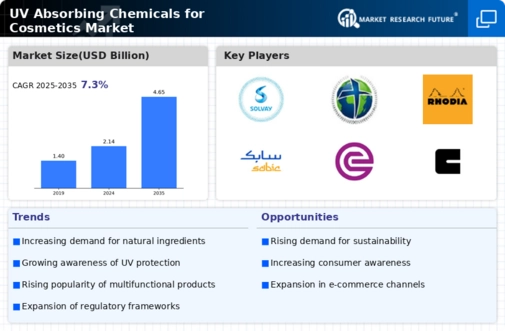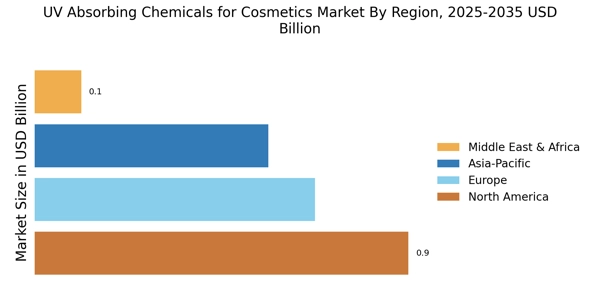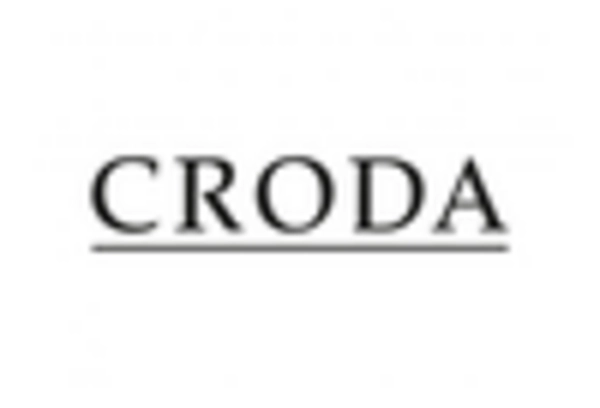Increasing Demand for Sun Protection
The rising awareness regarding the harmful effects of UV radiation on skin health appears to drive the demand for UV Absorbing Chemicals for Cosmetics Market. Consumers are increasingly seeking products that offer effective sun protection, leading to a surge in the formulation of sunscreens and cosmetics containing these chemicals. According to recent data, the sunscreen segment is projected to grow at a compound annual growth rate of approximately 7% over the next few years. This trend indicates a robust market potential for UV absorbing chemicals, as manufacturers strive to meet consumer expectations for safety and efficacy in sun protection.
Regulatory Support for Safe Ingredients
The evolving regulatory landscape appears to support the use of UV Absorbing Chemicals for Cosmetics Market, as governments and health organizations emphasize the importance of safe and effective ingredients in cosmetic formulations. Regulatory bodies are increasingly establishing guidelines that promote the use of approved UV filters, ensuring consumer safety while encouraging innovation. This regulatory support is likely to foster confidence among consumers, leading to increased demand for products that comply with safety standards. As a result, manufacturers are motivated to invest in research and development to create compliant and effective UV absorbing formulations.
Rise of E-commerce and Online Retailing
The expansion of e-commerce platforms seems to facilitate greater accessibility to UV Absorbing Chemicals for Cosmetics Market products. With the increasing number of consumers shopping online, brands are leveraging digital channels to reach a wider audience. This shift not only enhances product visibility but also allows for targeted marketing strategies that resonate with specific consumer demographics. Data indicates that online sales of cosmetics are expected to grow significantly, potentially reaching a market share of over 30% in the coming years. This trend underscores the importance of digital presence for brands in the UV absorbing chemicals sector.
Growing Popularity of Anti-Aging Products
The increasing consumer focus on anti-aging solutions appears to significantly influence the UV Absorbing Chemicals for Cosmetics Market. As individuals become more conscious of maintaining youthful skin, products that combine UV protection with anti-aging properties are gaining traction. Market data suggests that the anti-aging skincare segment is expected to witness substantial growth, with a projected increase of around 8% annually. This trend indicates a lucrative opportunity for manufacturers to innovate and incorporate UV absorbing chemicals into their anti-aging formulations, thereby catering to the evolving preferences of consumers.
Technological Advancements in Formulation
Innovations in cosmetic formulation technology seem to play a pivotal role in enhancing the effectiveness of UV Absorbing Chemicals for Cosmetics Market. Advances in encapsulation techniques and the development of new chemical compounds allow for improved stability and performance of UV filters. This not only enhances the product's efficacy but also extends its shelf life, making it more appealing to consumers. Furthermore, the integration of multifunctional ingredients that provide both UV protection and additional skin benefits is likely to attract a broader customer base, thereby expanding market opportunities.


















Leave a Comment